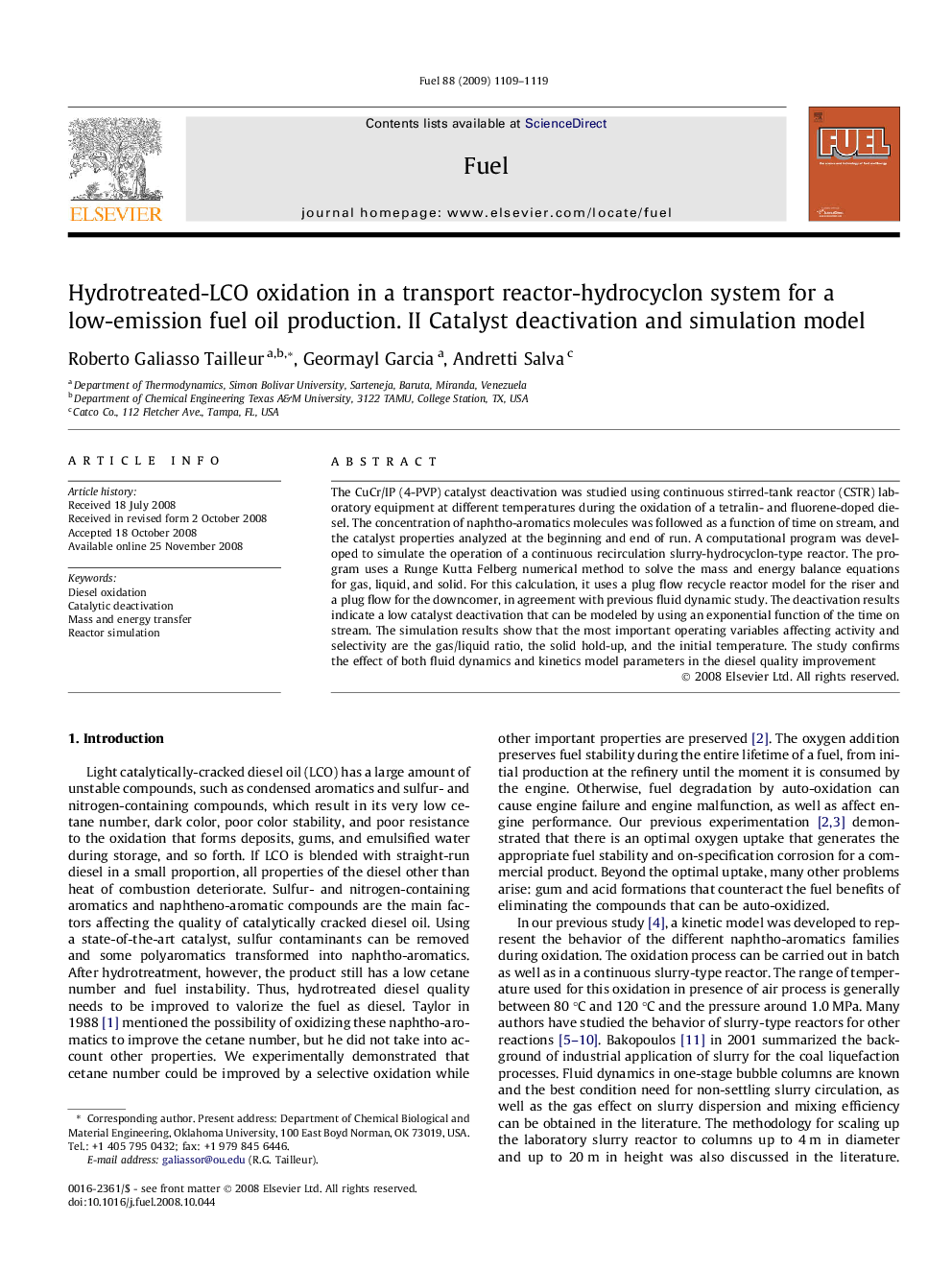| Article ID | Journal | Published Year | Pages | File Type |
|---|---|---|---|---|
| 207292 | Fuel | 2009 | 11 Pages |
The CuCr/IP (4-PVP) catalyst deactivation was studied using continuous stirred-tank reactor (CSTR) laboratory equipment at different temperatures during the oxidation of a tetralin- and fluorene-doped diesel. The concentration of naphtho-aromatics molecules was followed as a function of time on stream, and the catalyst properties analyzed at the beginning and end of run. A computational program was developed to simulate the operation of a continuous recirculation slurry-hydrocyclon-type reactor. The program uses a Runge Kutta Felberg numerical method to solve the mass and energy balance equations for gas, liquid, and solid. For this calculation, it uses a plug flow recycle reactor model for the riser and a plug flow for the downcomer, in agreement with previous fluid dynamic study. The deactivation results indicate a low catalyst deactivation that can be modeled by using an exponential function of the time on stream. The simulation results show that the most important operating variables affecting activity and selectivity are the gas/liquid ratio, the solid hold-up, and the initial temperature. The study confirms the effect of both fluid dynamics and kinetics model parameters in the diesel quality improvement
